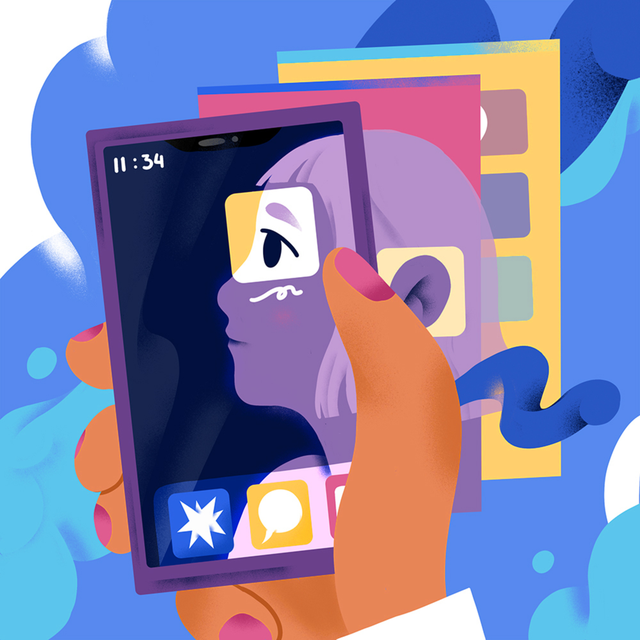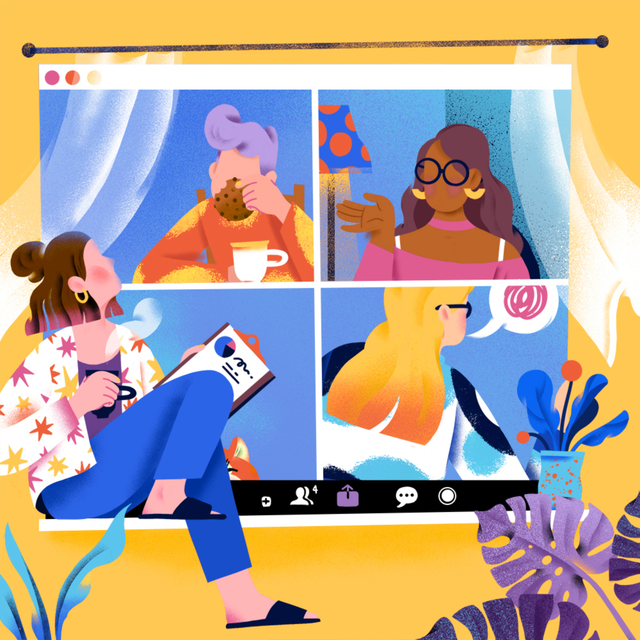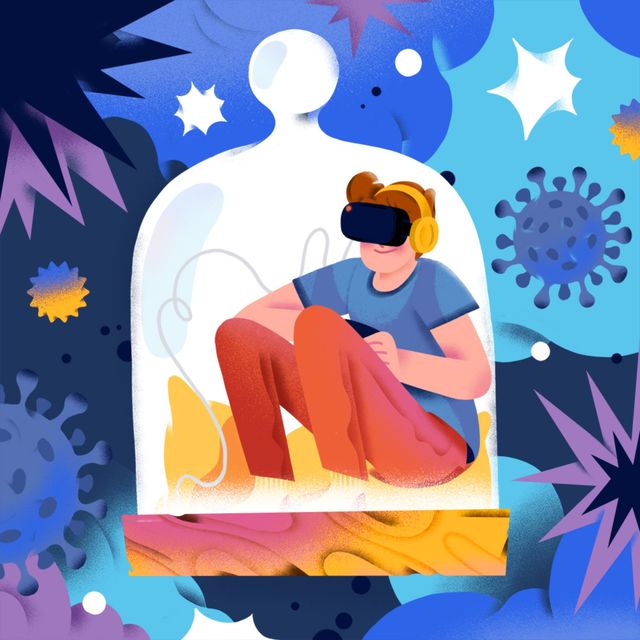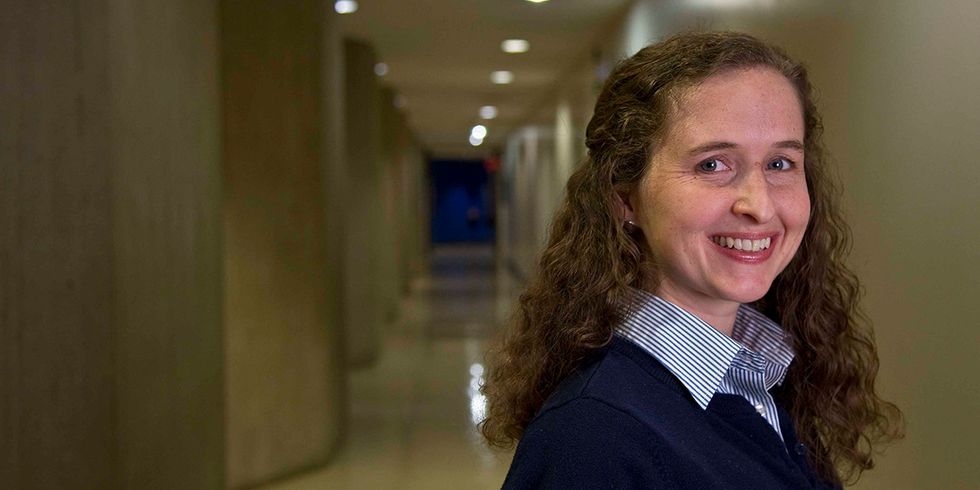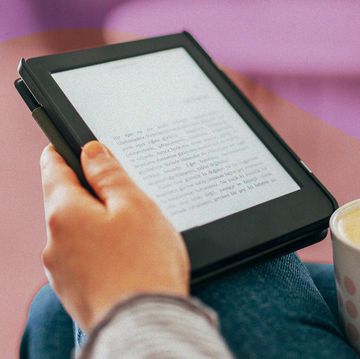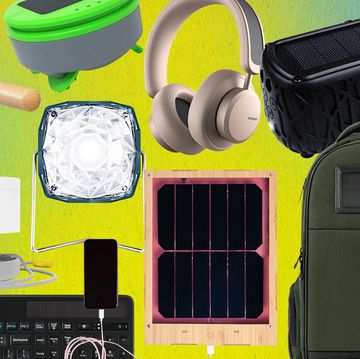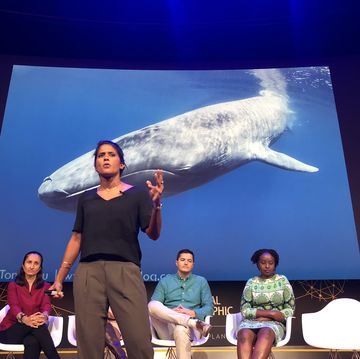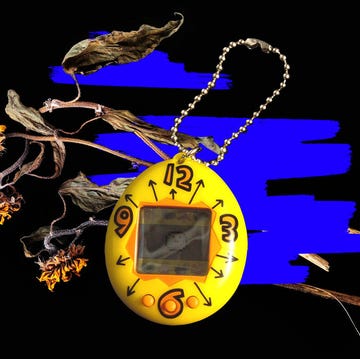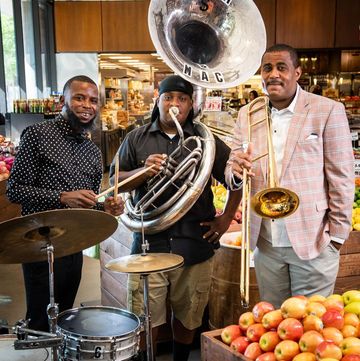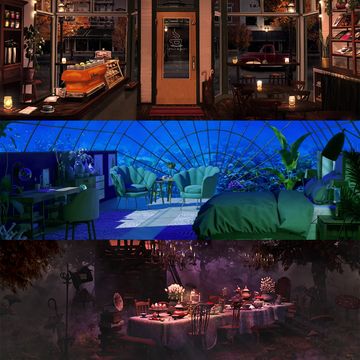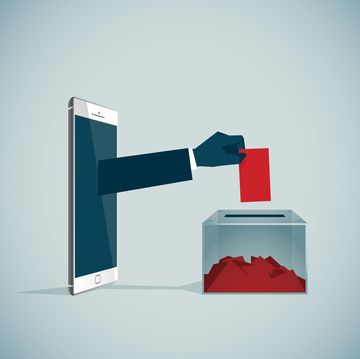When the U.S. screeched to a halt in March 2020 as a result of the pandemic, technology spared the world from a complete and total shutdown. From Zoom meetings to e-commerce to VR concerts, technology kept us connected and kept businesses running. We could continue taking workout classes via Instagram Live and Zoom, seeing our doctors face to face through video calls, and even hanging out together in virtual chat rooms. For those of us who live alone, it spared us from complete aloneness.
Given the reach technology has in every facet of our lives, and how central it’s been to our survival during Covid-19, Shondaland wanted to explore where tech is today, how we relate to it, where it’s headed, and the ways it will reshape our lives in the near future.
Professor Hadley Sikes runs a chemical engineering lab at MIT in Massachusetts, where she and her team are working around the clock, in collaboration with several labs and major corporations all over the world to create a rapid, at-home Covid-19 test.
Technology: A Shondaland Series
Professor Sikes and her team of graduate students, Ph.D. candidates, doctoral students, post-doctoral trainees, and undergrads, in conjunction with the chemical engineering company, 3M, are working to create a test that could be taken at home, using a nasal or saliva swab and show immediate results. The closest approximation to something like this would be a home pregnancy test or a UTI test that shows simple, understandable results within minutes. The tests have to be reliable, safe, and easy to use, quick to show results, and affordable to produce at scale and sell to the masses. It's a tall order, and the stakes are incredibly high.
“The vision is that anyone who does not have specialized training can add a sample to a test and observe a change by eye or in an image," Professor Sikes says. "It needs to be approved, and the FDA has the really difficult job of thinking about risk and benefits and data and weighing what is helpful and what the potential dangers and consequences might be."
Sikes says that her interest in science and chemical engineering began when she was a kid and she decided early on that she wanted to be a Professor. “I chose science out of curiosity,” she says. “I was always curious as a child, and I wanted to use that understanding to make things that everyday people use, and for social good. I grew up in Alabama and the experience of doing science fairs was really influential for me early on. My earliest science fair project was about the effect of caffeine on sea urchins. Later I did more environmental science and focused on whether a particular type of microbe used up carbon dioxide or made more. I became really interested in quantitative questions in biological systems.”
What kinds of tests are currently available for COVID-19?
According to the FDA, there are currently two types of COVID-19 tests on the market: diagnostic tests and antibody tests. Diagnostic tests are used to determine whether or not you have COVID-19, while antibody tests show whether or not you've had Covid-19 and developed antibodies to the virus. According to the CDC, antibodies can take anywhere from one to three weeks to show up in your bloodstream.
The diagnostic tests are known as PCR (polymerase chain reaction) tests and require specialized lab equipment to analyze and identify the virus's RNA. RNA, which stands for ribonucleic acid, is similar to DNA — it works to code, decode, regulate, and express genes.
Though the CDC said all COVID-19 tests should be administered for free in the US, a recent study by the Kaiser Family Foundation showed that a COVID-19 diagnostic test can cost anywhere from $20 to $850. Results can take as long as seven days to get back because of demand, and even then, they can be wrong.
There are rapid COVID-19 tests that take a few hours, but they are only available at point-of-care sites, like hospitals. These are antigen tests, like those that Professor Sikes’ lab is working on for home use. (Antigens are foreign substances like viruses, bacteria, cancer cells, and parasites, which can harm the body, which, when present, trigger an immune system response.) According to a tracking project by The Atlantic, more than 450,000 tests have been done every day in August, with most days hovering around 700,000 and higher.
“The molecules we’re trying to use to diagnose Covid-19 are present in infectious in bodily fluids,” Professor Sikes says. “So if a person is infected, our challenge as engineers is to design and come up with molecules that can capture parts of the virus and then other molecules that can label them and let us know if we captured them. There's a function that they need to have, but we also need to think about scale and stability and cost, and so it's a really difficult and exciting design challenge."
Antigen tests are the sweet spot for rapid, at-home Covid-19 testing because, according to the FDA, a positive result is usually accurate. A negative test, however, requires additional confirmation.
Professor Sikes’ lab is well-suited to help create the Rapid Covid-19 test, too. Prior to the Covid-19 outbreak, Sikes’ lab had experience working with Singapore-MIT Alliance for Research and Technology (SMART) to develop rapid tests to diagnose malaria, dengue, and tuberculosis.
"So we are in the middle of the outbreak," Sikes says, "and we are doing these expensive tests on a small part of the population. If we could test a lot more people, a lot more frequently, we could potentially contain the outbreak faster. There is some risk, of course. For example, if you are using a less sensitive test, someone who thinks they are sick may only take it once. If they get a negative, they may assume that they can stop wearing a mask or self-isolating. There is some potential for harm if it's not used correctly. You can kind of think about it like antibiotics where you take them for three to seven days, and there's some risk if you only take them until you feel better and throw them out, that you won't actually get better. In fact, you could get worse."
Why is a rapid Covid-19 test so difficult to develop and deploy?
"What works in the lab doesn't necessarily work at scale, or at cost," Professor Sikes says. In a development process like the one that the Sikes' team is working on, there are many moving parts that have to come together the right way.
First, there's the development of the actual proteins that can detect those present in an active Covid-19 case. Once those proteins are developed, there's the matter of how to get a sample of infected bodily fluids. Because Sikes' lab is working to create an at-home test, samples have to be collected in a way that most people are relatively comfortable managing frequently on their own. The test also has to be very reliable and simple to use.
Once the test is developed, it then has to go through multiple rounds of testing in the lab to ensure that the tests don't break down due to things like exposure to heat or cold during shipping — the tests must be stable in several different environments. At the same time, Sikes' team also considers manufacturing processes, availability of materials, and FDA approval.
"The kind of tests we are making are new technology," she says. "It hasn't been scaled and done before. We know how it works in the lab, but then there's a lot that happens after lab prototypes. There is product development and manufacturing, and clinical testing and manufacturing. Usually, these things are done in series over a period of years. In this case, we're trying to make rapid progress in a very short period of time."
What would the rapid Covid-19 tests be used for? How would they be rolled out?
Professor Sikes laughs when I ask about how she would hope to see the tests used. She has three kids, all school age, and she and her husband both work full time. "I'd like to see it used to get schools and workplaces open again," she says, "As a mom, I really want it to be used in schools. My kids miss their friends and teachers have a really hard job."
Sikes and her team are aiming to have tests that could potentially be purchased widely. "What I'm aiming for is the sort of affordable, frequent, ubiquitous test that could help us all return to work and return to school. We are a long way from that, though," she says.
In addition to working with 3M on ways to manufacture the tests, Sikes’ team is also working with the National Institute of Health Rapid Acceleration of Diagnostics or RADx, overseas teams, the FDA, and other universities to create the Rapid Covid-19 test.
“We are working with 3M to see if the test can be scaled, and manufactured and we started working with the NIH and then RADx. The NIH has pulled together a big team that has the experience and regulatory experts and program managers and project facilitators to define tasks and keep things on schedule. It’s a really big team of people,” she says. “Larger than I have ever worked with before.”
How soon could a rapid Covid-19 test be available to the public?
According to Sikes, the goal is to have a rapid test available for manufacturing in a matter of months. She cautions, however, that public availability is far off. To bring home tests to market will require FDA testing and approval, large-scale manufacturing, and then distribution to point-of-sale locations. Though the home tests are still well off in the future, Sikes is grateful for the experience that she and her students are gaining.
"It's been a wonderful educational experience for my students," she says, "it’s been challenging in some ways because the culture of universities and companies is quite different but, it's been a wonderful educational experience, to share data on our side and our prototypes and science, and look at what goes on inside a company. We have gotten a peek into what it's like to manufacture and scale things, and that's really rare."
"I think one of the most striking things is that there are many different teams working on this challenge around the world. The cooperation and the free exchange of information amongst all of us is the most striking. In the Boston area there has been a group working on diagnostics, and we have connected weekly through Zoom and shared info, and the same thing is happening on the Singapore side, it's been so open and such a great exchange of research and work."
Abigail Bassett is an Emmy-winning journalist, writer and producer who covers wellness, tech, business, cars, travel, art and food. Abigail spent more than 10 years as a senior producer at CNN. She’s currently a freelance writer and yoga teacher in Los Angeles. You can find her on Twitter at @abigailbassett.
Get Shondaland directly in your inbox: SUBSCRIBE TODAY

